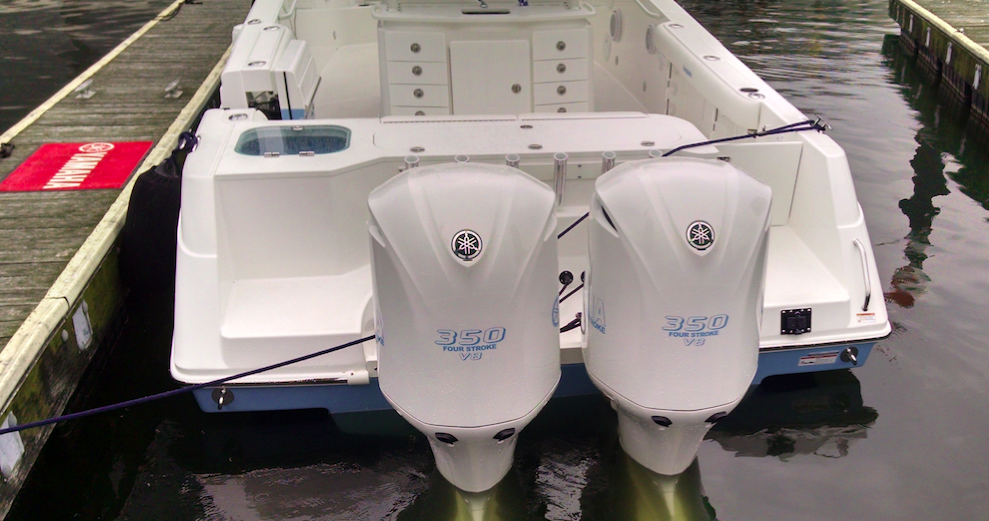Yamaha demos latest products at Baltimore event

BALTIMORE – Yamaha Marine Group showed off some of its latest innovations at a media event in Baltimore’s Inner Harbor Wednesday.
While Yamaha didn’t announce any new products at the event, the company had several products available for testing, including its recent introductions of the Talon Pontoon SDS Propeller and the 5.3-liter F350C outboard.
Talon Pontoon SDS Propeller
Introduced just last week, the Talon Pontoon SDS Propeller is designed to provide a solution for many of today’s midrange-powered pontoons, said David Meeler, Yamaha’s product information manager.
The blade design is combined with Yamaha’s exclusive Shift Dampener System (SDS). Talon Pontoon SDS Propellers are made of polished stainless steel and feature a larger blade area that helps provide improved thrust and control, with added grip and reduced ventilation in turns.
The propellers reduce or eliminate the clunk that can be associated when shifting in-line four-stroke outboards into gear. The SDS hub system also provides smooth and quiet in-gear operation, even at very low speeds, and can reduce vibration that can be more readily felt in aluminum boats, Meeler added.
The Talon Talon Pontoon SDS Propeller is expected to begin shipping in July.
See more from Meeler in the video below.
F350C
Announced in May and now shipping, the new 5.3-liter F350C is an updated version of the F350.
The F350C, which features new graphics designed to emphasize the new technology, now provides five full years of limited warranty coverage.
The F350C offers several benefits over other 350-horsepower outboards, the company says:
- Yamaha’s naturally aspirated V8 delivers more power, more smoothly, compared to a supercharged six-cylinder outboard.
- Specific marine design – the 60-degree V8 has four valves per cylinder and double overhead cams
- Variable Camshaft Timing (VCT) optimizes the engine’s torque at low and mid-range rpm
- Sequential multi-point fuel injection. Eight long-intake tracks in the induction system optimize power
- Less internal stress and friction, and lower internal engine pressures and heat build-up
- It runs on 89 octane fuel, while some supercharged engines need 91 octane for maximum performance.




